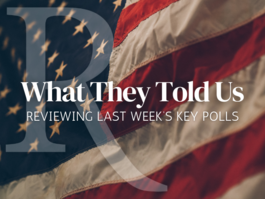Mystery of the Missing Millionaires
A Commentary By Froma Harrop
A daffy Wall Street Journal editorial about the "vanishing millionaires" of Oregon lit a spark in a fairly humorless week. It offers the usual boilerplate about the rich fleeing to tax-friendlier provinces because their state raised taxes, but this time with a great visual: "One-quarter of the rich tax filers seem to have gone missing."
Where did they go? You picture the millionaires riding the rails to Idaho, their hobo bundles weighted with gold bars. Or a new dust-bowl-type migration of BMWs loaded up with Birkin handbags and granny, all headed to Nevada. Or Portland liberals erecting a guillotine in Pioneer Courthouse Square and sending the millionaires to the next world.
Now, I appreciate that state tax policy plays a role in attracting businesses and high-income taxpayers. But the Journal presents no evidence of a stampede out of Oregon after the 2009 tax raise. (Thanks, guys, for all those numbers, but actually they don't make your case.)
"The state expected 38,000 Oregonians to pay the higher tax," the Journal states, "but only 28,000 did." The 10,000 "missing" taxpayers probably did move -- to a lower income level that's not high enough to activate the new tax. In case you didn't notice, there was an economic recession going on.
In a study titled "Dear Wall Street Journal: No Need to File a Missing Persons Report," the Institute on Taxation and Economic Policy noted the unexpected rise in the number of taxpayers earning under $100,000. It's possible that lower-earning peasants rushed into Oregon as the earls took flight, but then again, wouldn't a lousy economy be a better explanation for fewer rich people?
In noting Oregon's new income tax rates on high earners, the Journal ominously adds, "Only New York City's rate is higher." Yeah, and all those empty apartments on Park Avenue are now filled with squatters and their Sterno cans.
The Journal contends that what happened in Oregon is "an instant replay" of what happened in Maryland in 2008, after the legislature passed a millionaire's tax (which has just expired). "There, roughly one-third of the state's millionaire households vanished from the tax rolls after rates went up."
Did they really go poof? Or did the financial collapse of 2008 turn many million-dollar incomes into less-than-million-dollar incomes? Stock market crashes tend to do that.
More than one right-leaning think tank has called Rhode Island a "tax hell." This is something of an exaggeration. ("Tax purgatory" might be more like it.) In any case, critics of Rhode Island tax policies taxes often include the cheesy claim that 8,200 taxpayers fled the Ocean State from 2005 to 2006, before the recession hit.
The less picturesque truth is that the Bush tax cuts and the doubling of the child tax credit had freed many middle-class Americans of any income-tax liability. They didn't necessarily go anywhere -- they just stopped paying what little federal income taxes they were paying before.
From 2005 to 2006, nearly 2 million Americans left the federal income tax rolls. Where did they all flee to, Mars?
A Tax Foundation report notes that 2008 was a record year for non-payers of the federal income tax -- that is, those who got back every dollar withheld from their paychecks. "Non-paying status used to be a sure sign of poverty or near-poverty," Scott A. Hodge writes, "but Congress and the president have changed the tax laws to pull much of the middle class into the growing pool of non-payers."
Sure, anyone can spin a yarn about millionaire refugees lining up at the state border after a tax was raised. It's easy. All you have to do is ignore the economy.
COPYRIGHT 2010 THE PROVIDENCE JOURNAL CO.
See Other Political Commentary.
See Other Commentaries by Froma Harrop.
Views expressed in this column are those of the author, not those of Rasmussen Reports.
Rasmussen Reports is a media company specializing in the collection, publication and distribution of public opinion information.
We conduct public opinion polls on a variety of topics to inform our audience on events in the news and other topics of interest. To ensure editorial control and independence, we pay for the polls ourselves and generate revenue through the sale of subscriptions, sponsorships, and advertising. Nightly polling on politics, business and lifestyle topics provides the content to update the Rasmussen Reports web site many times each day. If it's in the news, it's in our polls. Additionally, the data drives a daily update newsletter and various media outlets across the country.
Some information, including the Rasmussen Reports daily Presidential Tracking Poll and commentaries are available for free to the general public. Subscriptions are available for $4.95 a month or 34.95 a year that provide subscribers with exclusive access to more than 20 stories per week on upcoming elections, consumer confidence, and issues that affect us all. For those who are really into the numbers, Platinum Members can review demographic crosstabs and a full history of our data.
To learn more about our methodology, click here.



